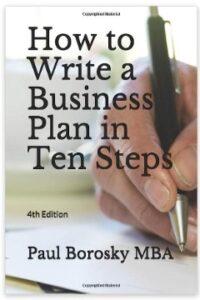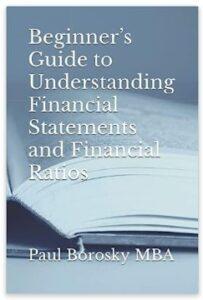How to Write a Welding and Fabrication Business Plan or Template
If you're considering venturing into the welding and fabrication industry, knowing how to write a comprehensive business plan is essential.
The industry has shown steady growth in recent years, with several factors contributing to its expansion. Rising demand for residential and commercial buildings, coupled with increased remodeling projects, has led to a surge in business for welders and fabricators. Furthermore, the need for small to medium-sized metalwork productions to achieve manufacturers' and builders' goals has further bolstered the industry's growth. As the demand for skilled welders and fabricators continues to rise, so does the importance of a well-crafted business plan tailored to this specialized field. To assist aspiring entrepreneurs, our expert welder and fabricator business plan writer has compiled invaluable tips and tricks to guide you in creating a professional and compelling business plan or business plan template. Let us help you chart a successful course in the dynamic world of welding and fabrication (7/23).
CHECK OUT OUR WELDING BUSINESS PLAN TEMPLATE!!!
Executive Summary for a Welding and Fabrication Business Plan or Template.
In the executive summary section of a welding and fabrication business plan, it is crucial to concisely highlight the scope of services offered by the welder or fabricator. Clearly outline the specific areas of expertise, whether the focus is on crafting custom metal framework joints or providing a wide range of services, including stair rails and metal arts. By succinctly disclosing the organization's scope of work in the executive summary, the business owner sets clear expectations for readers regarding the diverse array of services detailed in the plan. This section previews the strategic actions supporting the chosen services, offering investors and stakeholders a glimpse into the business's potential. The executive summary should also encompass a compelling overview of the business's unique value proposition, market position, and future growth projections, alluding to the following comprehensive plan. This summary is a snapshot of the business's vision, strengths, and strategic direction, captivating readers and inspiring confidence in the welding and fabrication venture's potential success.
Company Information and Location.

In a welding business plan's company information and location section, it is crucial to delve into the services offered and the rationale behind the chosen location. A thorough exploration of the welding and fabrication services provided sets the foundation for the business's scope and expertise. Clearly outline the range of welding services, such as custom metal fabrication, structural welding, or specialized welding techniques, to showcase the business's capabilities and appeal to potential clients.
Moving on to the location, provide detailed reasoning for the chosen site. If the organization has opted for a warehouse on the city's outskirts, explain how this strategic decision benefits the company and its clientele. Factors such as reduced rent, ample space for equipment and storage, and proximity to the target market can be highlighted as significant advantages of the selected location.
The welding business plan writer demonstrates the company's strategic insight and thoughtful planning by effectively identifying and explaining the thought process behind the services offered and the location chosen. Providing such insights gives potential investors and stakeholders a deeper understanding of the business's operational choices, fostering confidence in the welding and fabrication venture's ability to succeed in its chosen market.
Marketing Section for a Welding Business Plan.

The marketing section of a welding business plan is a vital aspect that outlines the various channels through which the business will promote its services. Industry competitors typically employ specific marketing channels, including traditional, networking, and internet-based strategies.
In traditional advertising, welding, and fabrication, business owners often utilize prominent signs outside their premises and magnetic decals on their trucks to create visibility and brand recognition within the local community. Networking plays a significant role in the industry, with business owners actively joining the local Chamber of Commerce and participating in networking events to establish valuable connections and gain referrals.
Internet advertising is essential in today's digital age. It involves creating a professionally designed website to showcase the business's capabilities and services and strategically using Google ads to reach a broader online audience. When crafting the marketing segment in the business plan, it is essential to provide concise 3 to 4-sentence descriptions for each marketing channel. This structure lets the reader understand the marketing strategies and how they align to communicate a consistent message to the target audience.
By strategically combining these marketing channels, the welding business can maximize its reach and effectively engage potential clients. Implementing a well-rounded marketing plan ensures the business's visibility, brand recognition, and, ultimately, its success in the competitive welding and fabrication industry.
Need Help Writing a Welding and Fabrication Business Plan?
Call or Text Paul, Doctoral Candidate, MBA.
321-948-9588
Email: Paulb@QualityBusinessPlan.com
Our business plan writer is located in Orlando, FL.
CLICK HERE TO CONTACT US TODAY!!!
Industry Research for a Welding and Fabrication Business Plan
The industry research section of a welding and fabrication business plan is crucial for understanding the broader market landscape and identifying the business's immediate competitors. Begin by exploring national trends and market dynamics related to the welding and fabrication industry. Understanding the industry's current state and prospects provides a solid foundation for the business plan. Next, specify and identify the key competitors in the local area. Conduct a thorough analysis of their strengths and weaknesses from the customer's perspective. This analysis will help the business plan writers position their welding and fabrication venture effectively in the market by leveraging unique selling points and addressing potential gaps in the competition.
When conducting industry research, consider discussing significant data points such as the global market size of welding, which stood at approximately $20.2 billion last year. Additionally, explore potential industry growth rates, projected to be around 4.6% per year for the next several years, indicating a promising market for welding and fabrication businesses. To provide a historical perspective on industry growth, the business plan writer may present charts depicting the industry's growth over the last seven years. These charts should be accompanied by informative commentary to help readers understand the trends and patterns shaping the welding and fabrication market.
The welding and fabrication business plan establishes a well-informed strategy for success by conducting thorough industry research and presenting data-backed insights. This research-driven approach empowers the business to capitalize on market opportunities, address industry challenges, and effectively position itself as a competitive player in the dynamic welding and fabrication industry.
Pro Forma Financial Projections for a Welding and Fabrication Business Plan Template.

The pro forma financial projections for the welding and fabrication business plan template follow a structured approach to showcase the business's sales and costs over time. Begin by presenting daily or weekly sales figures, providing a snapshot of the number of welding and fabrication projects sold daily or weekly. This level of detail offers a granular view of the business's revenue generation potential. Next, introduce the monthly fixed costs, outlining the essential expenses that the business incurs regularly. This includes items like rent, utilities, insurance, and salaries. Delineate these costs to understand the business's operational overhead.
To project revenues and costs for the next year and beyond, utilize growth rates that align with the business's expansion plans and market trends. By forecasting future growth, the pro forma financial projections provide a realistic estimation of the business's financial performance over time.
In some cases, daily sales may not apply to the business model. In such instances, consider using weekly or monthly sales figures instead. Regardless of the chosen sales structure, always include relevant information from the financial model in the business plan and an explanation to justify the projections.
Following this structured approach, business plan writers can substantiate their projections more effectively, providing a meaningful context for the financial statements. This ensures that the pro forma financial projections are well-justified and tailored to the welding and fabrication business's unique goals and strategies.
Hopefully, these insightful tips and tricks for writing a business plan were helpful. Email or call us for help with a business plan or financial projections.
Author: Paul Borosky, Doctoral Candidate, MBA., Author
Owner of: Quality Business Plan and Quality Business Consultant.
Date: 7/7/2023